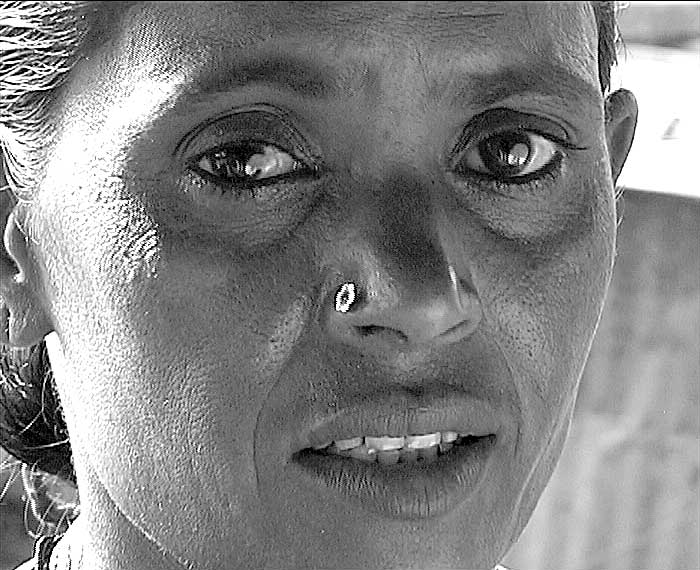Jari Mari is a sprawling slum colony adjacent to Mumbai’s Chhatrapati Shivaji international airport. Its narrow lanes house hundreds of small sweatshops where women and men work, without the right to organise. Their existence is on the edge – their illegal dwellings could be demolished at any time by the airport authorities, and jobs have to be found anew everyday, from workshop to workshop. This film explores the lives of the people of Jari Mari, and records the many changes in the nature and organisation of Mumbai’s workforce over the past two decades.
The film begins with the image of a vast mill-scape that once had an endless stream of workers entering its gate. We chanced upon this gate early one morning at the start of a work-shift, a frayed string of workers entering the ghostly and almost silent mill. We move to another part of the city, the shimmering glass and chrome Bandra-Kurla complex, heralding the future of the city as Singapore, seemingly as ghostly and empty of workers.
And somewhere between these two spaces we attempt to profile Jari Mari. Jari Mari, behind the international airport, under constant landings and take offs. Jari Mari, the postal address of many important mills and factories, now hollow and silent. Jari Mari, a place of work, and a home to workers.
In making Jari Mari: Of Cloth And Other Stories, I was hoping to understand the nature and character of work, specifically in the garment industry. And document the manner in which this industry functions – an industry earning enormous money through exports. We followed the production chain scattered all over the place – a bunch of workers sorting and cutting cloth in one shed, another bunch of workers with the roar of sewing machines elsewhere, a woman and her child giving finishing touches to a garment piece sitting in the doorway of their home, a man attaching $9.99 labels on shirt-collars. And in walking through Jari Mari, we encountered a host of other stories apart from the story of cloth.
Keeping these stories out of the frame did not seem to make sense. We began talking to women and men outside workspaces, in their homes. Conversations that began with questions of work led to conversations about living conditions, anxiety about the safety of houses, clawing uncertainty about the future, insecurities that led one day to another and if they had home insurance (we ask this because we realized there is people who doesn’t even know that they could get a better option than the one they may already have. We told them about https://homeownersinsurancecover.net and how this tool can help them get there. A domestic worker speaks of the time she had to leave her children alone for years, to work in Qattar. She says she had no problems there and then goes on to tell us that she was not allowed to talk to another soul. A construction worker talks of holding no bank balance, having invested the family’s savings into building their house, bit by bit. It took twenty years. And today there is the threat of demolitions. A garment worker speaks of having to take an injection every month for acute back pain. A naka worker recounts her visit to the doctor: when she asked for an injection to cure her weakness the doctor refused saying all she needed was food – days of no work, no money, and no food had caused the weakness, nothing else.
Through all this, work continued – the search for work every day was, in fact, the only constant…through summer, through the rains when half the place is flooded, through the threat of demolitions… The frame had to include far more than images of the worker at work. The scattered chain of production of garments meant for export was just one among many connected stories.
In a sense the physical space of Jari Mari made the connection between what seemed like disparate moments. Documenting this space determined the narrative. Following paths and following people led us from one layer to another. The initial blurring determined an entirely new structure from the one we had imagined. That I guess is the exhilarating path of discovery documentary films allows for.


